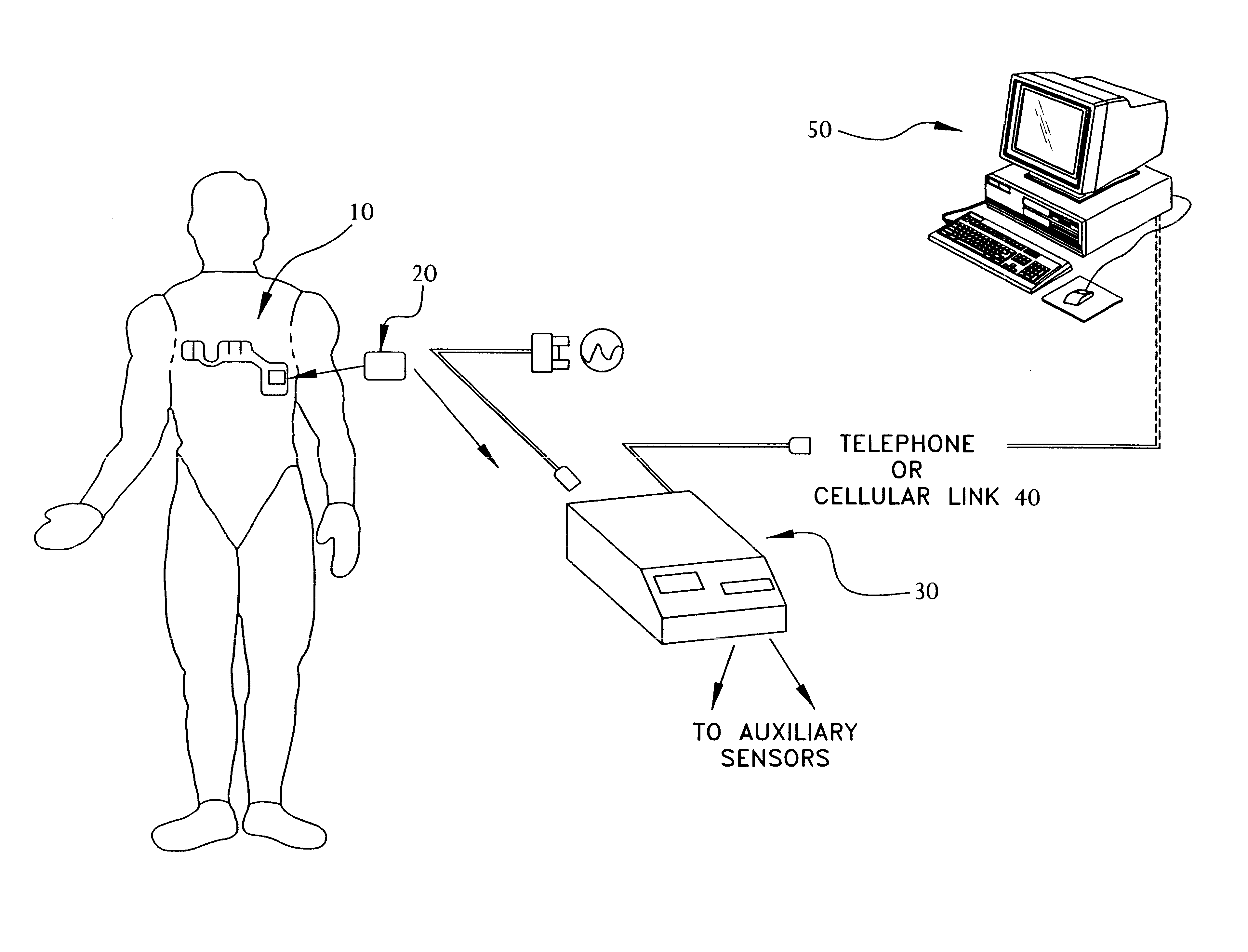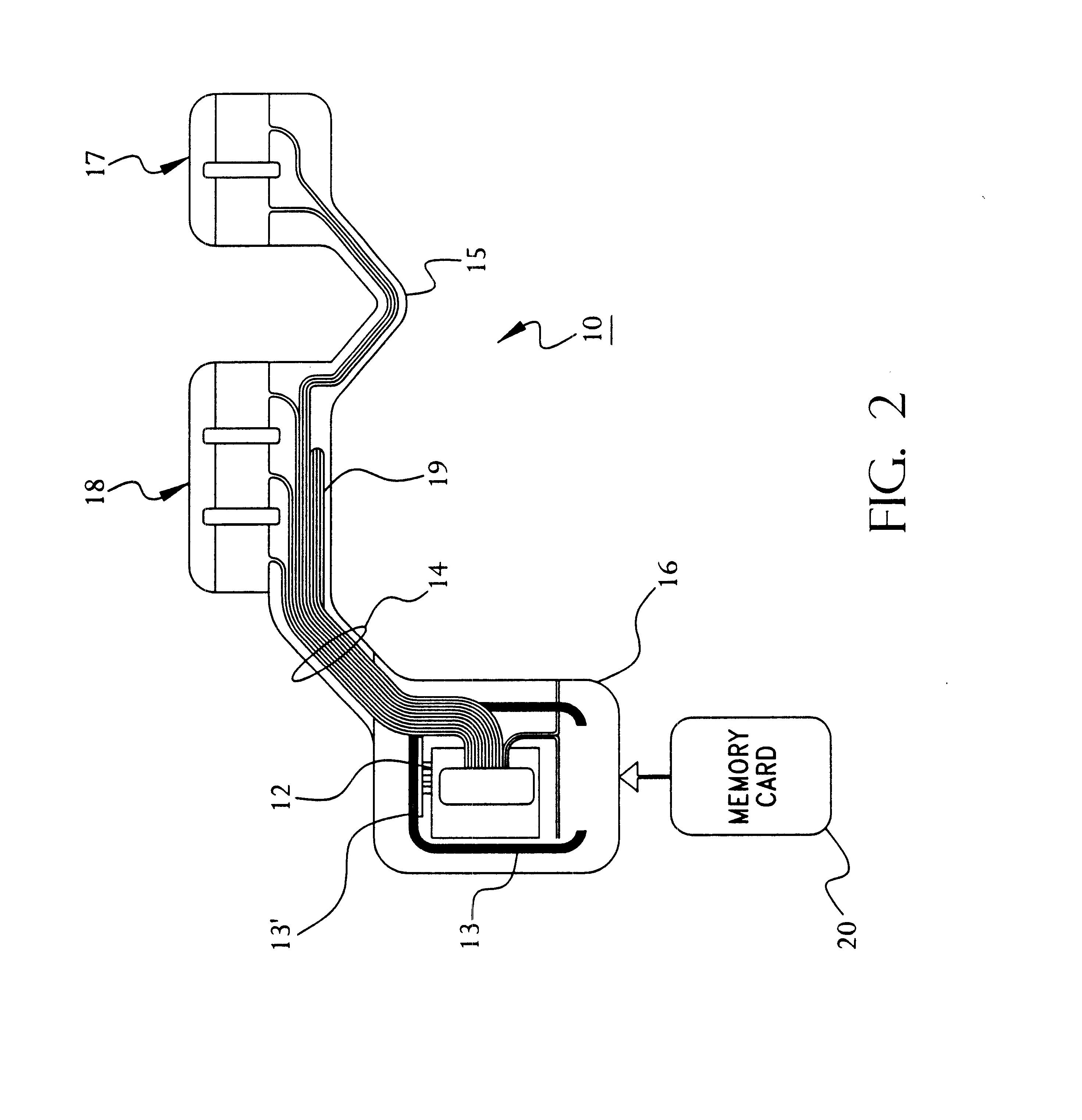Portable remote patient telemonitoring system using a memory card or smart card
a patient telemonitoring and memory card technology, applied in the field of portable remote patient telemonitoring system using a memory card or smart card, can solve the problems of prolonging the duration, increasing the overall cost of the trial, and putting a lot of money and effort into human trials
- Summary
- Abstract
- Description
- Claims
- Application Information
AI Technical Summary
Benefits of technology
Problems solved by technology
Method used
Image
Examples
Embodiment Construction
A system and method with the above-mentioned beneficial features in accordance with a presently preferred exemplary embodiment of the invention will be described below with reference to FIGS. 1-12. It will be appreciated by those of ordinary skill in the art that the description given herein with respect to those figures is for exemplary purposes only and is not intended in any way to limit the scope of the invention. All questions regarding the scope of the invention may be resolved by referring to the appended claims.
I. System Overview
A presently preferred embodiment of the remote patient telemoritoring system of the invention is illustrated in FIG. 1. As illustrated, the system of the invention comprises a disposable multi-parameter sensor band 10, preferably worn on the patient's chest, for measuring patient vital signs (health parameters) and storing the measured vital signs data in a memory card / smart card 20 and / or transmitting the measured vital signs data to a portable data...
PUM
 Login to View More
Login to View More Abstract
Description
Claims
Application Information
 Login to View More
Login to View More - R&D
- Intellectual Property
- Life Sciences
- Materials
- Tech Scout
- Unparalleled Data Quality
- Higher Quality Content
- 60% Fewer Hallucinations
Browse by: Latest US Patents, China's latest patents, Technical Efficacy Thesaurus, Application Domain, Technology Topic, Popular Technical Reports.
© 2025 PatSnap. All rights reserved.Legal|Privacy policy|Modern Slavery Act Transparency Statement|Sitemap|About US| Contact US: help@patsnap.com



